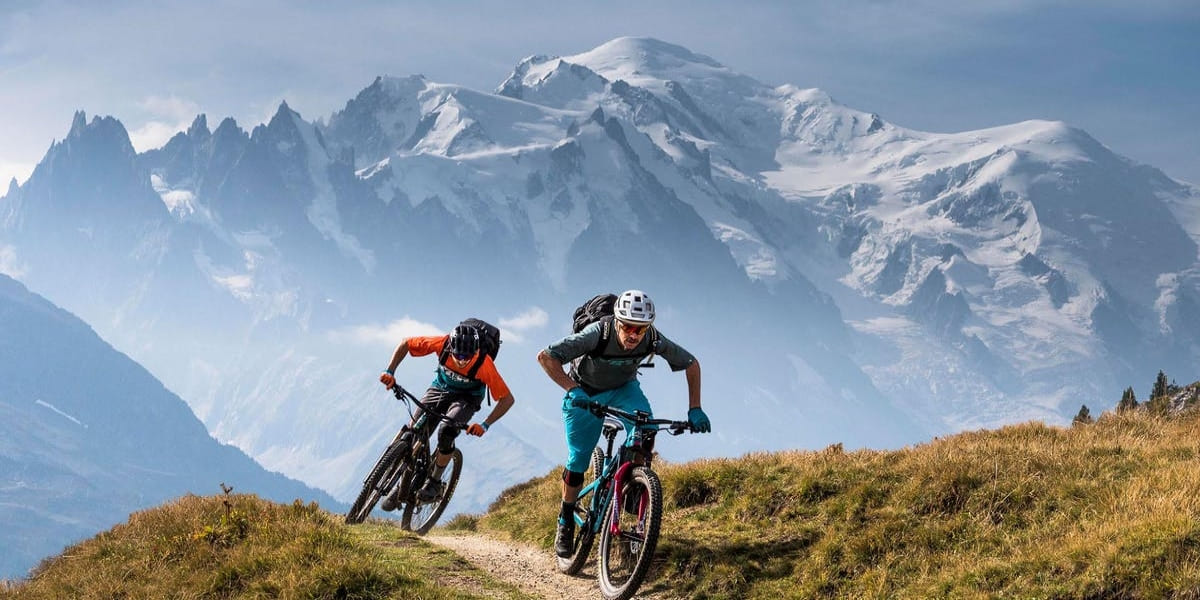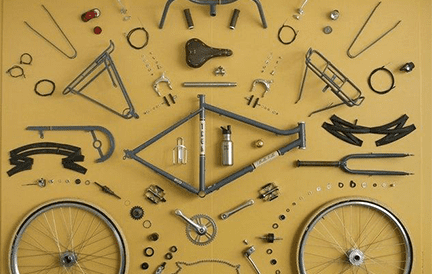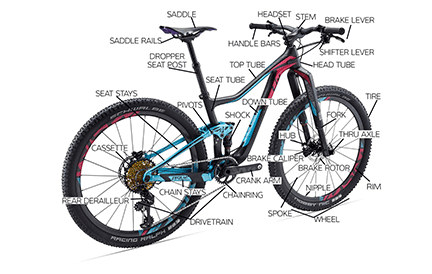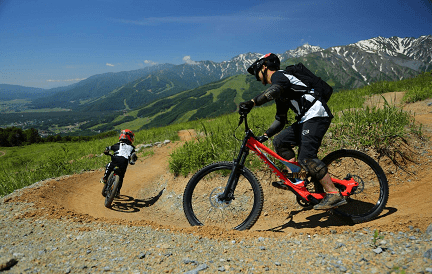The rim of your wheel, be it the aluminium or carbon fibre hoop on which the tire sits, is a significant component of your bike, affecting factors like your pace and capacity to tolerate shocks. Make sure you’re not going in loops! With the help of our perfect mtb rims buying guide, get the right bike rims!
- Part 1: An overview of MTB Rims
- Part 2: Classification of Mountain Bicycle Rims
- Part 3: Buying Guide on Good MTB Rims
Part 1: An overview of MTB Rims
There are four basic sections to a bicycle wheel, each of which affects the wheel’s bulk, efficiency, and dependability.
It would be beneficial to get a basic understanding of these components and how they relate to improved road performance before making any changes to them, whether upgrading or downgrading the vehicle’s performance, hard work, speed, or braking quality.
Typically, the rim on most mountain bike wheels is used to retain the tire, which is its only function.
Rider grip and trek grip may be greatly influenced by the rim’s width, which has a direct effect on the tire’s width and the rider’s grip. We will get to that afterwards.
Sturdy and lightweight rims for road and trail riding decreases rotary weight, allowing you to go quicker with less exertion.
In the meantime, the latest generation of deep-section carbon rims provides an aerodynamic privilege to competitive road racers.
BMX and downhill MTB racing, on the other hand, demand rims that can resist severe abuse without folding.
When designing a new wheelset or upgrading your MTB rim, you must consider not only the rim’s size but also its weight, circumference, spoke type and number. An Ultra-lightweight pair of XC racing hoops will not be strong enough to withstand the punishment of a trail full of hurdles and rocks, while a remarkably solid pair of downhill rims will be difficult to pedal for any length of time.
Lightweight rims mean less rotational mass, which results in superior acceleration and speed – ideal for cross-country racing and high-speed cross-country riding.
Although certain MTB regulations, such as downhill racing, enduro riding, and freeride, necessitate wider, stronger rims that can withstand repeated abuse without scrunching like a snack.

Part 2: Classification of Mountain Bicycle Rims
Aluminium and carbon fibre are the two main materials used to make bike rims MTB.
Various alloys and fabrications can alter specific ride attributes, but each material has some common features.
Rims made of aluminium are less expensive than those made of carbon. They are usually a little bulkier as well. Carbon wheels are typically stiffer, which could be beneficial or detrimental depending on your needs.
Aluminium Rims
Aluminium alloy rims are very popular and widely used across several wheel makers’ pasturelands. A good rim at a reasonable price is more practical than a carbon rim and is less prone to failure under an effect like a collision between the rim and a boulder. As previously stated, it is not essentially a heavyweight option: For example, Mavic uses an ISM 4D process to eliminate all unneeded substances from their alloy rims, leading to a lightweight yet dependable rims (which results in the distinguishable mound around the spoke nipples).
Carbon Fiber Rims
Carbon rims are becoming increasingly popular across a wide range of mountain biking domains. The pattern of the rim can be tweaked during the carbon layering process to tailor precise sturdiness and reduce the weight in certain areas. But contrarily, carbon could be more prone to failure, requiring the addition of more material in other areas. As a result, the weight difference between carbon and alloy rims is negligible.
In comparison to a low-quality carbon rim, a good carbon rim is not only more reliable, but its ride character traits can be vastly different. Cheap rip-offs may appear to be authentic, but the layering and fibre orientation may not have been taken into account.
Part 3: Buying Guide on Good MTB Rims
Bikes appear to be quite simple, but when it comes to purchasing substitute bike components or upgrades, things can become quite complicated and perplexing. Before you spend your money on bike rims, there’s a lot to learn. Hopefully, by the time you’ve finished reading this bike rims buying guide, you’ll have learned everything there is to know about mountain bike rims.
When choosing an MTB rim, the diameter, width, and number of spokes are the three most important factors to consider.
Diameter of the Rim
Mountain biking is always changing, as made evident by the evolution and wide range of wheel sizes available.
For decades, 26” has been the regular size, and it has served us well.
However, the 27.5”, 29”, and larger sizes, which were only recently introduced, have effectively challenged the 26-inch’s dominance.
We will go over the different wheel sizes and why we think the 27.5′′ is the definite winner.
26-Inch Wheel
The 26-inch is the original MTB wheel size, dating back to the 1970s.
Today, you’ll still see a lot of riders riding on 26-inch wheels.
They are, however, up against a lot more competition from larger sizes, which can outperform these smaller wheels in terms of performance.
Remember that the space between the tire edges determines wheel size.
However, because tire height varies, it is uncommon for a 26-inch tire to be exactly 26 inches. The nimbleness of 26-inch MTB wheels is one of their best features. They’re ideal for winding tracks. Another advantage is a faster acceleration rate on smooth surfaces, as well as a lighter weight due to the smaller diameter. Because they’ve been around for so long, there are plenty of 26-inch wheels, components, and spares available. If you break a 26-inch, you should be able to get a replacement or repair it fairly quickly.
Upgrades are also affordable due to the abundance of 26-inch components.
Regrettably, compared to the larger sizes, there is significantly less rollover capability. It is more difficult to roll over obstacles on a 29er or 650B because they are hit at a steeper angle.
As a result of this, as well as the fact that you will be able to dip into potholes more easily. On rough terrain, you will lose speed more quickly.
27-inch Wheels
In 2012, the 27.5-inch/650B was introduced as an effort to unify the benefits of both the 26-inch and 29-inch wheels.
They may have seemed to be a niche option at first, but they have grown in popularity.
Because wheel size is measured from the edge of the tire to the edge of the tire, you could simulate riding 27.5-inch wheels by putting high-profile tires on a 26-inch wheel.
Many people consider the 650B to be a natural step up from the smaller model.
The 27.5-inch wheel offers a number of advantages and is a good compromise between a 26-inch and a 29-inch wheel. They have the rapid speed of 26-inch wheels that 29ers lack, but you will notice a visibly smoother roll, similar to that of 29-inch wheels. What makes 650B wheels so enticing is their better rollover without having to sacrifice much in the way of versatility.
Furthermore, many smaller riders may be put off by 29ers because of their unwieldy appearance, but the 27.5 may seem to be a better fit.
They are perhaps the best of both worlds. They were obviously expensive when they first came out, as were components such as tires and frames, as there were few available to meet the new wheel size. These days, it is far less of a problem. Moving up to 27.5-inch wheels is a natural development if you’re upgrading from 26-inch wheels.
The’27.5-inch wheel size is still available, and a 27.5-inch Plus is also available.
27-inch Plus Wheels
The addition of Plus sizes is one of the most recent developments in the ever-evolving world of mountain bike wheels. They are simply wheels with the same internal diameter as a standard wheel but a larger outside diameter.
Although 29+ and even 26+ MTB wheels are available, 27.5-inch wheels are the most popular. The primary advantage of Plus wheels is the greater traction they provide.
They appear to be attempting to replicate the grip of fat bike tires on a relatively small wheel. You will get more traction with a wider tire, but you will not lose much in the way of rolling resistance. Because Plus wheels are heavier than standard wheels, you can expect a less manoeuvrable ride with a slower ability to handle. If you want more solidity, a Plus wheel is a good option; the additional stability can lift your spirits. If you ride on a lot of loose terrains, the Plus is the way to go.
However, if you ride mostly on flat terrain and are a self-assured rider, the additional drag may not be worth it.
29-inch Wheel
29-inch wheels generated a stir when they initially emerged, but they are gaining favor among pros and beginners alike, and they are winning more races.
They’re still popular on cross-country bikes, but they’re also becoming more popular on downhill bikes.
The ability to roll over objects with ease is probably the primary advantage of a 29-inch. Hurdles hit the wheel at a lower point on a 29er than on a small wheel, making it much easier for the 29er to slide over them. As a result, on rough terrain, these wheels will provide a smoother ride. They further enable you to ride on terrain that would otherwise be off-limits on smaller wheels.
It’s nothing to scoff at, as increased comfort and confidence on rough terrain may lead to faster riding.
Once you’ve reached floating speed, you’ll notice that 29ers are more proficient at sustaining it because they have more momentum. However, the size of the wheels has some disadvantages in terms of speed, which is rather obvious. Acceleration is slower with 29-inch wheels because they have more rotating mass and weigh more than smaller wheels. As a result, while maintaining floating speed may be easier, getting to that pace may take much longer.
Width of the Rim
Cross-country, marathon, and off-road riders utilize thin, light rims, whereas gravity riders prefer stronger, wider rims.
23mm rims are now standard for cross-country and trail riding, combined with tires up to 2.1 inches wide.
Riding rock parks and tricky terrain requires rims with a 28mm width that can accommodate huge 2.25-inch to 2.4-inch tires.
Descendants of the legendary downhill and freeride racers may select rims with a diameter of 36–40 mm, or even more, to accommodate hefty, reinforced 2.5-inch–2.7-inch downhill tires.
Spokes
Spokes are the parts of the car that connect the hubs and the rims.
The number of spokes on the front and rear wheels differs. For strength, the rear wheel needs more spokes.
More spokes usually equate to a stronger wheel, but this comes at the expense of weight. Spokes on MTB wheels are made of steel wire, but their shape and diameter can vary significantly.
We hope this guide was able to help you buy your perfect MTB rims.









